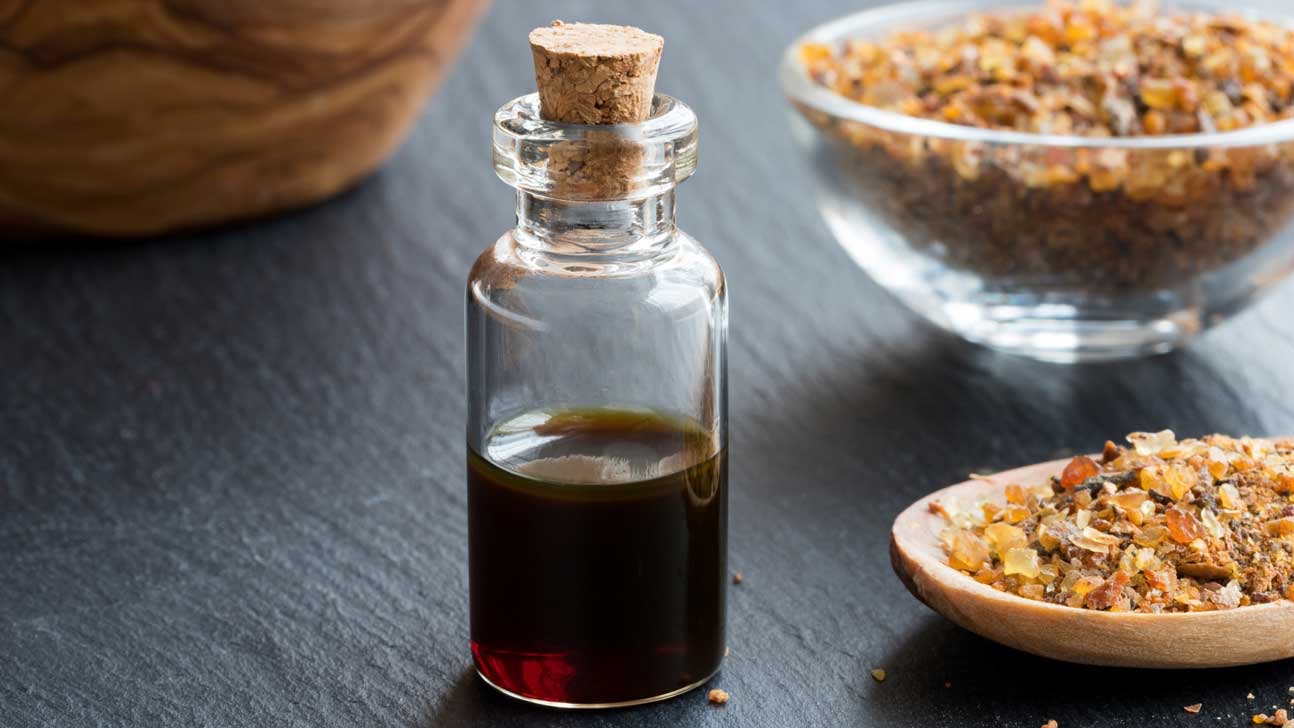Myrrh as a Multi-Faceted, Anti-Inflammatory Agent
Jan 19, 2025
Myrrh as a Multi-Faceted, Anti-Inflammatory Agent
By Krista Kill
Myrrh’s anti-inflammatory action has been historically used to treat a variety of conditions. All states of disease are driven by inflammation in the body. While acute inflammation can be beneficial for injury healing, chronic inflammation is detrimental to the health and vitality of the body, and serves as a breeding ground for disease to express and thrive (Chavda et al., 2024). Low grade levels of chronic inflammation have been proven to be present in disease of various systemic origin, including metabolic, psychiatric, and neurodegenerative diseases (Chavda et al., 2024). While disease can feel like a complicated topic, when traced back to its origins, the multitude of medical diagnostic criteria will always lead back to chronic inflammation. For this reason, Myrrh’s therapeutic actions are extraordinarily valuable to a variety of conditions, due to its potent, anti-inflammatory actions. While it is notorious for its topical application in wound healing, stomach ulcers, and other “wound” types of conditions, it also has many other applications as well (Batiha et al., 2023).
In recent years, myrrh has been recognized for its anti-diabetic, anti-cancer, and anti-parasitic benefits. In a rat study, Myrrh’s oleo-resin was shown to reduce Giardia lamblia, a common parasitic organism, by 100% in feces samples (Batiha et al., 2023). Parasitic infections can create a multitude of symptoms, including neuropsychiatric. These infections can commonly mediate presentations of anxiety, by creating dysbiosis in the gut, which creates an imbalance in the gut-brain axis (Luo et al., 2024).
Its oil has also been shown to be an effective treatment for a variety of fungal species, including the ever popular Candida albicans, along with Tinea pedis (Batiha et al., 2023). Fungus can be attributed to a variety of gut conditions, autoimmunity (Roe, 2021), allergies, and neurodegenerative diseases, such as Alzheimer's (Phuna & Madhavan, 2022). In 94% of chronic sinusitis cases, fungal colonization in the nasal passages was found to be present (Akhondi et al., 2023). In conditions, such as allergies and/or sinusitis, IL-31, which elevates histamine, due to mast cell activation, myrrh can act as a mast cell stabilizer, by inhibiting IL-31 (Shin et al., 2019).
Its anti-inflammatory action is accomplished in a variety of ways. One of these mechanisms includes the increase of white blood cells. Rather than attacking a specific pathogen, instead, myrrh enhances the role of the immune system. This makes myrrh an effective remedy for hard to treat bacterial strains, such as Staphylococcus aureus and Escherichia coli (Peterson, 2020). Myrrh also supports the immune system by its ability to inhibit the production of inflammatory cytokines and enzymes, including IL-31. IL-31 is a pro-inflammatory cytokine, which is released by mast cells and induces histamine release (Shin et al., 2019). It also aids against IL-13, which is a proinflammatory cytokine, which breaks down the mucosal lining of the gut, if elevated chronically (Hader et al,, 2023). This also makes myrrh an effective agent against autoimmune gut conditions, such as colitis (Hader et al., 2023). These are a few of the many applications of myrrh, and its defense against acute and chronic inflammation.
References
Akhondi H, Woldemariam B, Rajasurya V. Fungal Sinusitis., (2023), In: StatPearls
[Internet].
Treasure Island (FL): StatPearls Publishing; 2025 Jan-. Available from:
https://www.ncbi.nlm.nih.gov/books/NBK551496/
Batiha, G. E., Wasef, L., Teibo, J. O., Shaheen, H. M., Zakariya, A. M., Akinfe, O. A.,
Teibo, T. A., Al-Kuraishy, H. M., Al-Garbee, A. I., Alexiou, A., & Papadakis, M.
(2023). Commiphora myrrh: a phytochemical and pharmacological update.
Naunyn-Schmiedeberg's archives of pharmacology, 396(3), 405–420.
https://doi.org/10.1007/s00210-022-02325-0
Chavda, V. P., Feehan, J., & Apostolopoulos, V. (2024). Inflammation: The Cause of
All Diseases. Cells, 13(22), 1906. https://doi.org/10.3390/cells13221906
Hader, H., Hering, N. A., Schulzke, J. D., Bücker, R., & Rosenthal, R. (2023). Myrrh
protects against IL-13-induced epithelial barrier breakdown in HT-29/B6 cells.
Frontiers in pharmacology, 14, 1301800.
https://doi.org/10.3389/fphar.2023.1301800
Petersen, D. (2020). HERB 503: Advanced Herbal Materia Medica II (20th ed).
Portland, OR: American College of Healthcare Sciences.
Phuna, Z. X., & Madhavan, P. (2022). A closer look at the mycobiome in Alzheimer's
disease:
Fungal species, pathogenesis and transmission. The European journal of
neuroscience, 55(5), 1291–1321. https://doi.org/10.1111/ejn.15599
Shin, J. Y., Che, D. N., Cho, B. O., Kang, H. J., Kim, J., & Jang, S. I. (2019).
Commiphora myrrha inhibits itch-associated histamine and IL-31 production in
stimulated mast cells. Experimental and therapeutic medicine, 18(3), 1914–1920.
https://doi.org/10.3892/etm.2019.7721
Luo, X., Yang, X., Tan, S., Zhang, Y., Liu, Y., Tian, X., Huang, Y., Zhou, Y., He, C.,
Yin, K., Xu, D., Li, X., Sun, F., Tang, R., Cao, J., Zheng, K., Yu, Y., & Pan, W.
(2024). Gut microbiota mediates anxiety-like behaviors induced by chronic
infection of Toxoplasma gondii in mice. Gut microbes, 16(1), 2391535.
https://doi.org/10.1080/19490976.2024.2391535
Lorem ipsum dolor sit amet, consectetur adipiscing elit. Cras sed sapien quam. Sed dapibus est id enim facilisis, at posuere turpis adipiscing. Quisque sit amet dui dui.
Stay connected with news and updates!
Join our mailing list to receive the latest news and updates from our team.
Don't worry, your information will not be shared.
We hate SPAM. We will never sell your information, for any reason.

